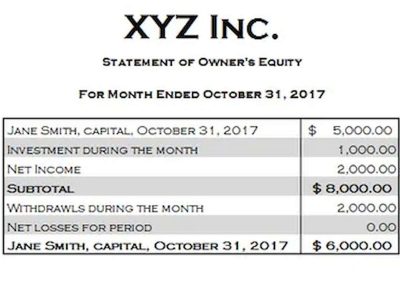
Yet Schneider has a higher overall net income due to much greater gains on the sale of investments. Startups and mature companies can exhibit vastly different financial characteristics. A startup might have high operating expenses as a percentage of revenue due to initial investment in growth, while a mature company might have lower percentages due to established operations. Comparing these companies using vertical analysis alone may not provide an accurate assessment. Showing the relative size of each financial statement item allows investors and analysts to assess the financial structure of companies.
What is the Formula of Vertical Analysis?
Investors, managers, and analysts use vertical analysis to identify trends in operational performance, make intra-firm comparisons, and gauge financial health against industry standards. The first step of vertical analysis is to make a new income statement, such as the common size income statement stated below. Here, we have divided each item by the company’s total sales and shown each category as a percentage of total sales for year 1-3 respectively. First, gather the balance sheet figures for each line item, such as cash, accounts receivable, fixed assets, etc. You can likely export the company’s financial statements from your accounting software to an Excel spreadsheet for easy analysis. This type of analysis enables businesses to view the relative proportions of account balances, compare internal changes over time, and identify trends.

Vertical Analysis Vs Horizontal Analysis

Current assets were 40% of total assets in 2020, 50% in 2023, and 45% in 2022, it shows liquidity increased but then partially dropped back down. Viewing financial statement trends in percentages through vertical analysis rather than absolute amounts removes the impact of overall growth or decline. This allows you to spot changes in the composition and proportional relationships between line items. In the realm of finance, vertical Certified Public Accountant analysis aids in comparing the composition of income and expenses over time or against industry peers. By converting figures into percentages, it normalizes financial data and makes it easier to identify trends, patterns, and areas of concern.
Example of Vertical Analysis
This analysis might lead you back to more a horizontal analysis of Schneider and Jonick in order to determine why so much income is being generated from the sale of investments. Example of the vertical analysis accounting of the financial statement, which shows the total amount and percentage. Furthermore, the operating expenses, such as selling and administrative expenses, account for 10% and 6% of net sales, respectively.
Company Valuation: How to Value Your Business?
- Both techniques provide valuable insights for financial analysis and decision-making, but they serve different purposes and offer distinct perspectives on a company’s financial performance.
- Likewise, all the items in the balance sheet are stated as a percentage of the total assets.
- Overall financial performance is usually analyzed with horizontal or ratio comparison tools.
- You simply receive a concise view of your line items without performing complex calculations.
- Vertical analysis makes it easier to compare companies with different levels of sales or assets by expressing them as percentages rather than absolute amounts.
Vertical analysis is important because it helps stakeholders understand the relative proportions of accounts and performance in relation to each other. It gives business owners a more detailed view of their financial health compared to just knowing their total assets, liabilities and equity. By comparing the proportions of vertical analysis individual accounts from time period to period, companies can track fluctuations and use them to inform strategic decisions, assisting with financial forecasting.

We can gather from the data below that the sales of the company increased consistently from year 1 to year 3. However, while sales rose consistently from year 1 to 3, net income dropped markedly in year 3 so we would like to look into this in more detail. Despite the various advantages, there are a few factors of vertical analysis accounting that prove to be a disadvantage.
- Given below is an example, where we have the income statement of a company (in US dollars).
- The research involved data from 150 multinational companies and demonstrated how vertical analysis facilitates better comparison regardless of company size differences.
- Vertical analysis lets you identify trends, growth areas, and patterns in your financial statements and build well-informed strategic plans.
- Expressing each balance sheet line item as a percentage of the base allows analysts to understand the relative composition of assets, liabilities, and equity.
- You can likely export the company’s financial statements from your accounting software to an Excel spreadsheet for easy analysis.
Understanding the Impact of Vertical Analysis on Profitability Evaluation

It helps identify the impact of changes in asset or liability categories on the overall financial health of the organization. With vertical analysis, one can Accounting for Churches compare and contrast the financial statements of one company with another, or across various companies. When each income statement or balance sheet item is given as a percentage of total sales and total assets respectively, one can view and compare the relative proportion of each item across companies. This helps in assessing relative profitability, efficiency and competitiveness among other factors over time.

Vertical Analysis for Income Statements
Vertical analysis indicates the relative importance of each line item in a certain period. For example, the amount of cash reported on the balance sheet on Dec. 31 of 2024, 2023, 2022, 2021, and 2020 will be expressed as a percentage of the Dec. 31, 2020, amount. Shaun Conrad is a Certified Public Accountant and CPA exam expert with a passion for teaching. After almost a decade of experience in public accounting, he created MyAccountingCourse.com to help people learn accounting & finance, pass the CPA exam, and start their career. Thousands of people have transformed the way they plan their business through our ground-breaking financial forecasting software.
When using this alongside horizontal analysis, you can get a full picture of a company’s financial position. Vertical Analysis using Income Statements is a method where each line item is represented as a percentage of a base figure, typically total revenue. Vertical Analysis using Income Statements provides insight into the operational efficiency of a company.
No comment